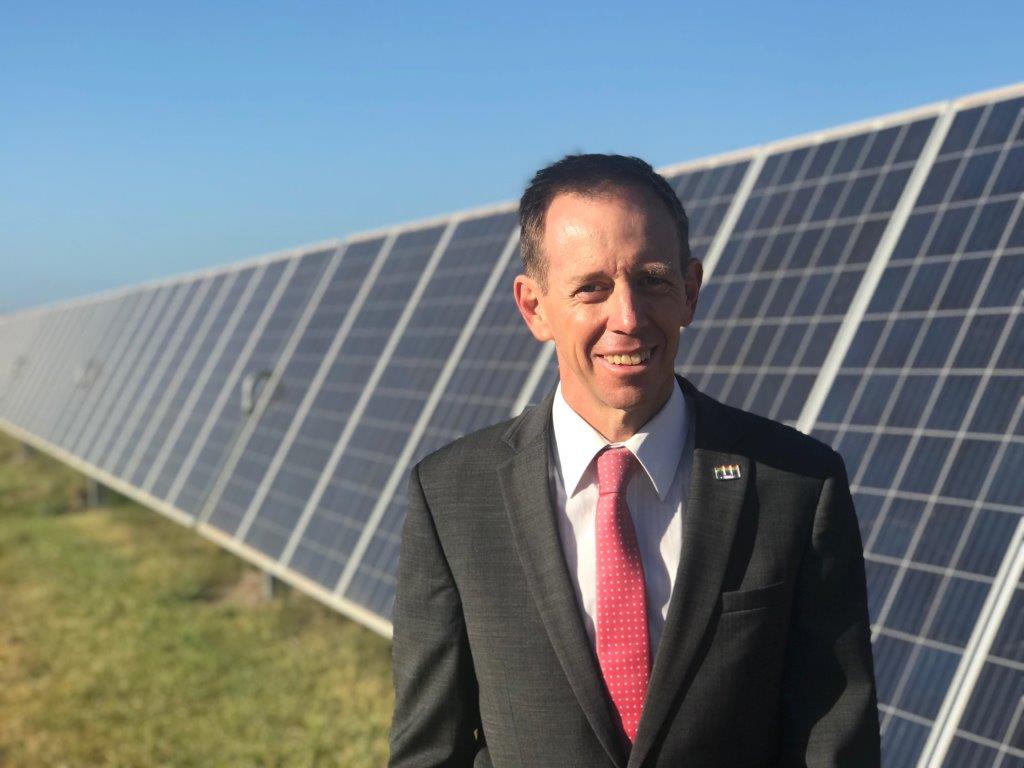As new investment in renewable energy projects slows down to levels not seen since the prime ministership of Tony Abbott amid policy uncertainty and mounting regulatory challenges, climate responsibility is on the shoulders of Australian states and territories. At this critical hour, one of the nation’s renewable energy front runners, the Australian Capital Territory (ACT), is extending its series of reverse auctions.
Addressing the Clean Energy Council’s CEO Forum on Wednesday, ACT Minister for Climate Change and Sustainability Shane Rattenbury announced a further reverse auction for 200 MW of wind or 250 MW of solar. While the Territory has already contracted enough energy to deliver on its 100%-by-2020 renewable electricity target, it appears determined to further buttress the industry.
The ACT is often credited with throwing a lifeline to the renewable energy industry through a series of reverse auctions during the dark era of the Abbott government which tried to scrap the renewable energy target. It now comes to help again as renewable energy investment slows down risking rises in power prices and future energy reliability. According to a CEC policy briefing paper released on Wednesday, new investment in renewable energy projects such as solar and wind farms has collapsed to less than 800 MW in each of the first two quarters of 2019, from a high of more than 4500 MW in late 2018.
Reverse auctions pave the way to 100% RE
In 2016, the ACT Government legislated a target of sourcing 100% renewable electricity by 2020—from within the ACT or across the National Electricity Market (NEM). The major initiatives the Territory has taken thus far include: a PV feed-in tariff scheme that operated between 2009 and 2011, a 40 MW large-scale solar auction held in 2012 and 2013, two 200 MW wind auctions held in 2014 and 2015, a 1 MW community solar scheme that opened for proposals in 2015 and the 200 MW Next Generation Renewables auction awarded in 2016.
Under the ACT reverse auctions, the contracted generation can be anywhere in the NEM provided the projects demonstrate exceptional economic development benefits to ACT renewable energy industries. This flexibility broadens competition and brings down costs.
In 2016, the Territory government announced two successful wind proponents as the winners of the Next Generation Renewables auction, the 91 MW Crookwell 2 Wind Farm developed by Union Fenosa Wind Australia in New South Wales and the 109 MW Hornsdale Wind Farm Stage 3 developed by Neoen and Megawatt Capital in South Australia.
At the time, the Next Generation Renewables auction set a benchmark price for renewable energy in Australia with $73/MWh for the Hornsdale Wind Farm, fixed for 20-years. The price for Crookwell Wind Farm of $86.60/MWh was as a record low for a wind farm in NSW. The output from the two wind farms is calculated to be the final renewable electricity needed to meet the ACT’s 100%-by-2020 renewable electricity target and 40% reduction on 1990 level 2020 greenhouse gas emission target.
During the 2018/19 financial year, the ACT’s share of renewables in the energy mix reached 74%.
This article will be amended as further details on the auction emerge.
This content is protected by copyright and may not be reused. If you want to cooperate with us and would like to reuse some of our content, please contact: editors@pv-magazine.com.









“At the time, the Next Generation Renewables auction set a benchmark price for renewable energy in Australia with $73/MWh for the Hornsdale Wind Farm, fixed for 20-years. The price for Crookwell Wind Farm of $86.60/MWh was as a record low for a wind farm in NSW. The output from the two wind farms is calculated to be the final renewable electricity needed to meet the ACT’s 100%-by-2020 renewable electricity target and 40% reduction on 1990 level 2020 greenhouse gas emission target.”
I can’t tell. was Crookwell done first or was Hornsdale installed first? I know a couple of articles said the TESLA energy storage installed across the Neoen wind farm, initially cost $208/kWh to build the 100MW/129MWh energy storage system in 2017. I know in the U.S. that it seems like every ‘new’ solar PV or wind generation system that goes out to competitive bid brings back numbers for the generation and storage of electricity in the $31/MWh to $38/MWh price point.